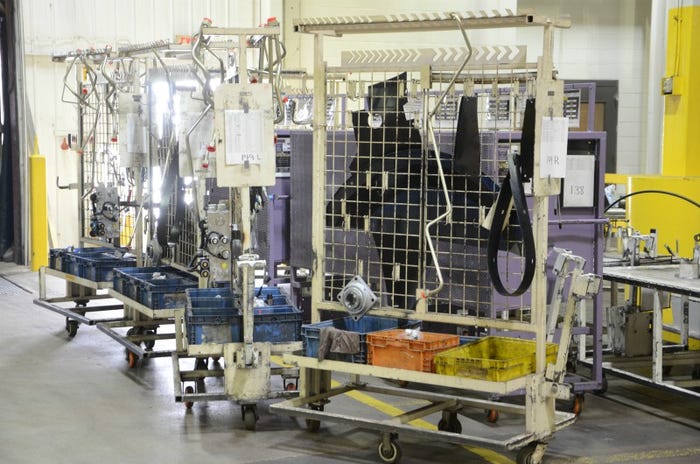September 5, 2018

Every farm equipment maker has its own approach to building equipment — at times dictated by the facility, design differences or location. But after visiting three modern plants, I was struck by how similarly each one dealt with a range of issues.
The tours showed me that world-class manufacturing is alive and well in the ag sector, and it’s making a difference in the final quality of the machine you see.
“World-class manufacturing” is a kind of buzz phrase that captures a range of concepts. Manufacturers use jargon such as WIP for “work in progress” (or process); JIS for “just in sequence”; JIT for “just in time”; “cell manufacturing,” “kaizen” and “kanban.” The last three concepts are Japanese, and come from work done in the 1960s and 1970s by W. Edwards Deming.
Digressing to Deming
Deming developed concepts of statistical process control that could help companies improve product quality in new ways. In the 1950s, he took the ideas to Japan where manufacturers recovering from World War II embraced his way of thinking.
Based on his early work, others rethought the manufacturing process. Toyota was a shining example of using proper quality processes. Every line worker can stop production if something is wrong. Quality is measured at each step, rather than at the end of the build.
Today, U.S. manufacturers have fully embraced these ideas and are making them their own.
World Class and farm equipment
Case IH, during the media event I attended on its 150 and 250 Series combines, shared how new manufacturing techniques are being deployed at its facility. Then a few days later I toured Kinze Manufacturing, where I found some interesting similarities. And finally a trip to Ankeny, Iowa, gave me a look at John Deere Works where cotton pickers are made.
I’ve been around farm equipment manufacturing for years. From the early days of world-class manufacturing to today, I’ve seen a wide range of approaches. Here are a few, and my take on why they matter:
• Kitting the job. At every workstation in a manufacturing plant, many tasks are completed — from wiring a cab to attaching hydraulics to an engine. Today’s farm equipment makers are now putting those jobs in “kits” so workers know they have the parts they need. The person who assembles the kits can keep track of parts, knowing when to order more. And those orders are triggered by rules. For example, order new bolts when down to 100.

‘KITTING’ PARTS: Grouping parts in kits makes production more efficient. The two rearward racks are “kitted,” and the one in the foreground is being finished for work on the line. These kits are to be used at a specific station in the Case IH Grand Island, Neb., plant.

• Tools in place. How many of you have your tools outlined on shop’s workbench? For a manufacturing plant where there may be a second shift, this can be key. Knowing where tools are for a specific job is important. Every workstation in the plants I visited have organized workstations where it’s easy to know that all tools are available for the work at hand.
• Fancy lighting. Walking through a plant you’ll see more LED lighting, which cuts down on costs. But you may find yourself walking into a dark section and having the lights come on when you arrive. Two of the sites I visited use “presence” lighting and shifted to LEDs to save money.
• Quality along the line. Along the manufacturing line at all three plants, workers are responsible for quality. If something isn’t working right, the worker can call on others to solve a problem or get needed parts. Plant managers know how long it takes to get through a specific station, and many have displays showing if part of the process is slowing down.
What do these things mean? First, farmers are seeing better-quality equipment. Second, manufacturers must keep a lid on costs, and these techniques can save a company money on work being redone, slowed processes and other factors that can hinder plant profitability.
You’ll find these machines have a fit and finish that beats some expensive cars. If every manufacturer adopts these quality approaches, the separator in the market is dealer support. Something to ponder.
About the Author(s)
You May Also Like






